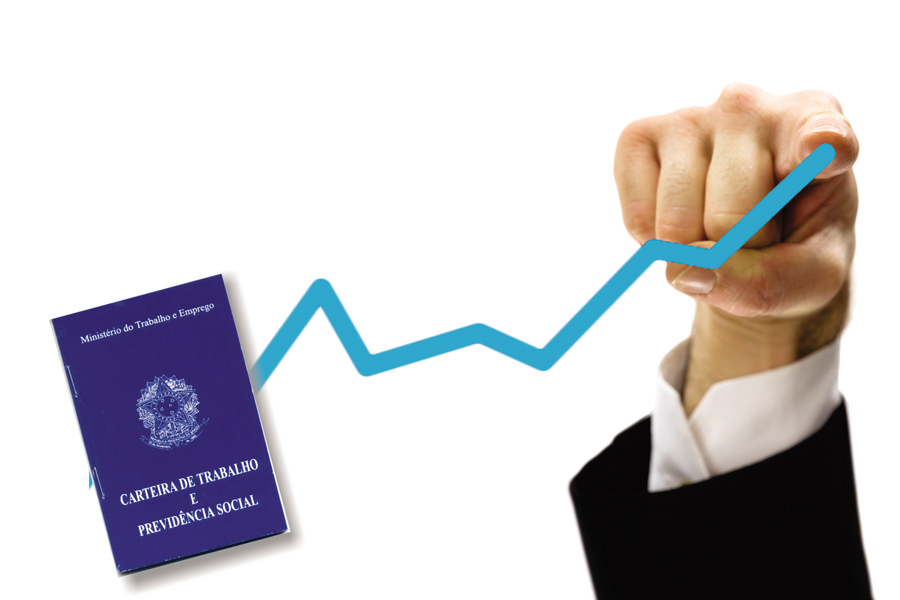Unemployment rate falls to 10.5% in April, to 11.3m people
06/01/2022

The labor market continued to surprise analysts in April. Even though the projections foresee a worsening in the second half of the year, in line with the deceleration of the wider economy, the better-than-expected numbers have already led some to place a positive bias towards unemployment at the end of the year.
According to data from the Continuous National Household Sample Survey (Pnad Contínua), it fell to 10.5% in April from 11.1% in the quarter ending in March, reported the Brazilian Institute of Geography and Statistics (IBGE). Thus, 11.349 million Brazilians are still unemployed in the country.
The result was below the projections compiled by Valor Data, which ranged from 10.7% to 11.2%, with a median of 11.9%.
Compared to the previous quarter, the number of unemployed fell by 5.8% to 11.349 million. This is the lowest level since early 2016. The employed population advanced 1.1%, to 96.5 million people, the highest since records began, in 2012.
Adriana Beringuy, coordinator of IBGE’s Household Sample Survey, pointed out that the growth of the employed population has been spreading among the different economic activities and remained high in the first months of the year, contradicting the expected seasonality.
In her assessment, this shows that the economy is somewhat closer to normality, with less effect of the pandemic. “Information technology activities provided the necessary infrastructure for the economy in this more virtual environment. Now, especially in the second half, other activities have signs in the occupation, such as services,” she said.
Despite the improvement, the occupation level (the proportion of employed people within the working-age population) is still at 55.8%, a far cry from the levels of 57% in 2015 and 58% in 2014.
Caio Napoleão, an economist at MCM Consultores, highlights the fact that the unemployment rate fell despite a rapid recovery in the labor market participation rate. “This drop in the unemployment rate had been occurring very much at the expense of a labor force that remained stable, as well as a participation rate that had been stuck near 62% since the third quarter of last year, seasonally adjusted, one point below the pre-pandemic level,” he said. “Only there was a sharp correction last month, the participation rate came back to 62.7%. Even so, the employed population grew to the point of more than compensating for this,” he points out.
According to Mr. Napoleão, one factor that may have helped the participation rate jump in the month was the return to in-person classes, which led mothers who previously ended up staying at home to care for their children to the labor market. “That is a strong hypothesis, because the participation rate was more lagging for women than men,” he notes.
For Tiago Barreira, an economist at iDados, the market improvement still has some room to grow, given that the labor force has not yet resumed its pre-Covid crisis levels. Still, this trend is expected to lose some strength, given that the participation rate is already close to that seen at the pre-pandemic level – 62.4% currently, compared to 63.7% at the end of 2019.
Mr. Barreira also recalls that the participation rate may stabilize above the levels seen before the pandemic, since, because of issues such as the Social Security reform, which encouraged people to stay longer in the labor market, the participation rate may be on a structural upward trend.
In Santander’s calculations, the monthly unemployment rate fell to 9.4% in April, seasonally adjusted. This is the first time the indicator falls below double-digit levels since December 2015. And, despite predicting a slowdown in job generation in the second half, because of issues such as the monetary tightening conducted by the Central Bank, the April result puts a positive bias to the bank’s projection for the Brazilian labor market. At the moment, the average rate for 2022 is at 12.7%, but already under revision.
The same happens with MCM’s estimate, currently at 10.2%. “These are numbers that still can change, given that recent data signal something better,” Mr. Napoleão said.
On the other end, Tendências understands that the improvement observed in the last few months is “fruit of a return to normality,” and not a change in market dynamics. In a report to clients, economist Lucas Assis considered that the rise in interest rates, as well as domestic political uncertainties and the global slowdown expected in the second half of the year should reverse the current trend, causing the unemployment rate to reach 10.8% by December.
Source: https://valorinternational.globo.com/economy
